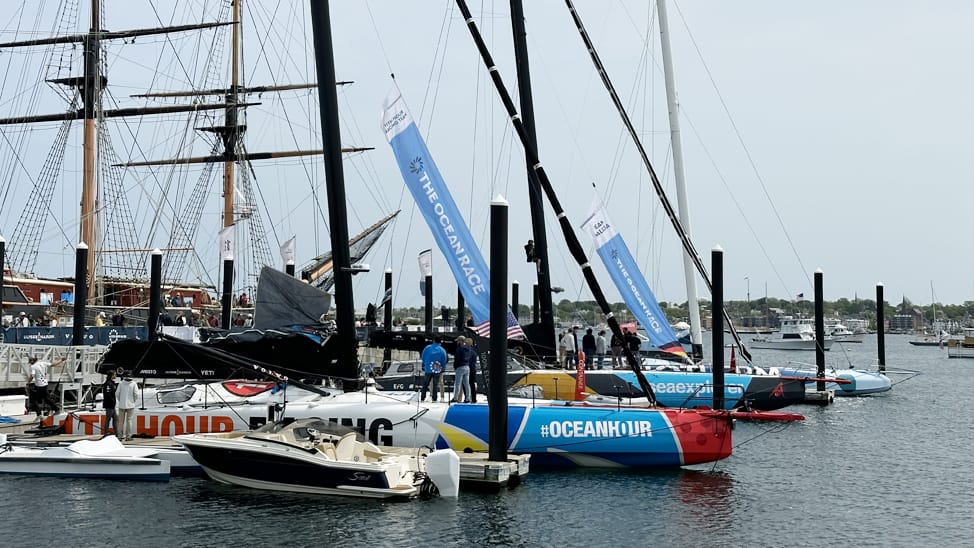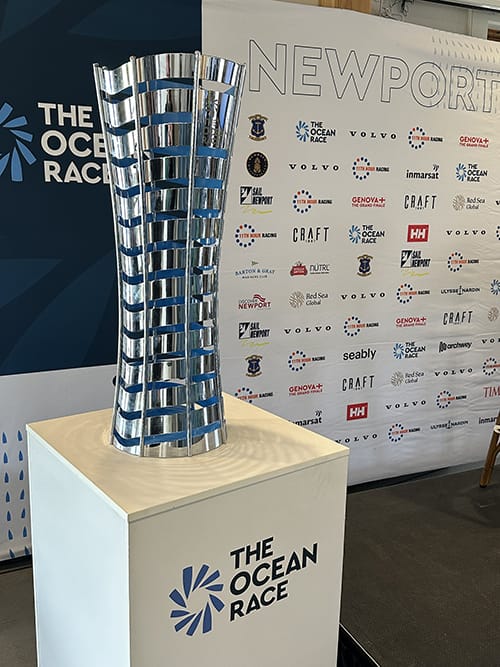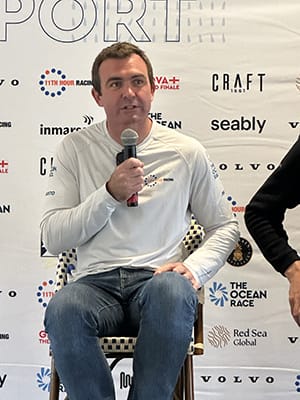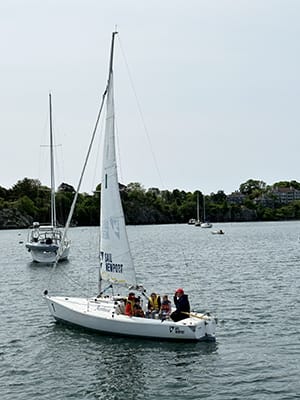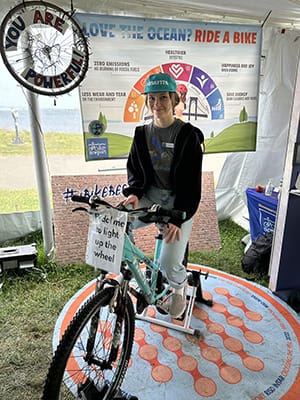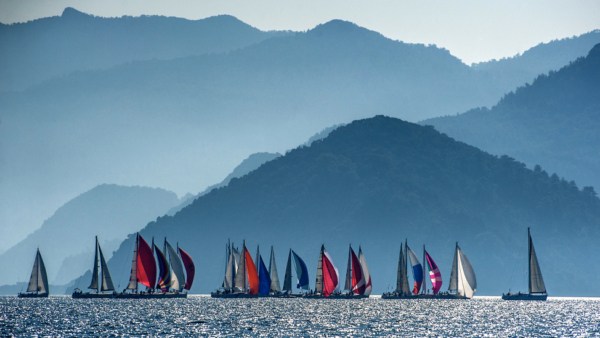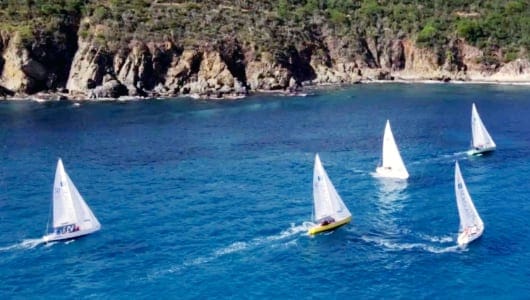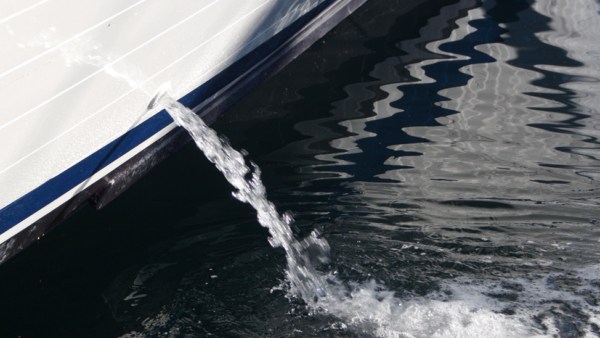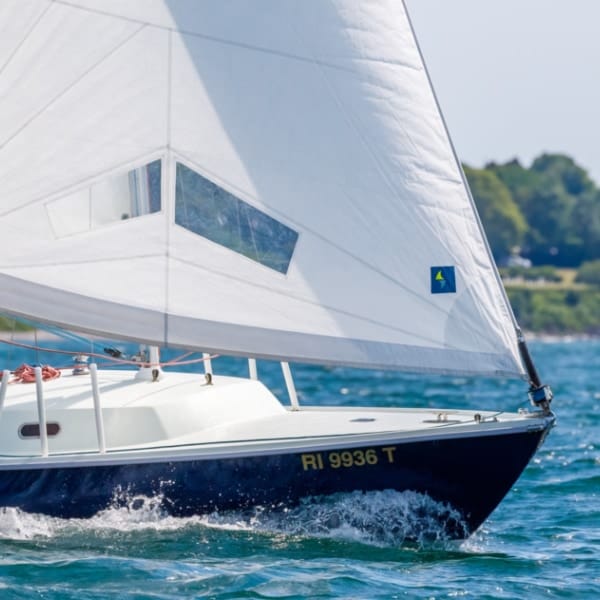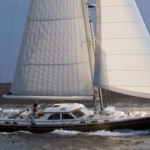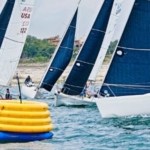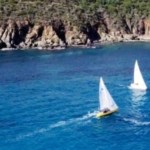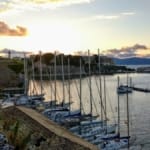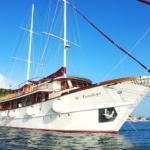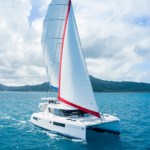Writer, Editor and Sailor, Bob Curley, is a Rhode Island Expert who contributes to American Sailing on sailing New England and the Caribbean.
The globe-spanning Ocean Race is not only a grueling test of endurance and seamanship but an opportunity to engage the sailing community in protecting the seas — including the unique perspective of sailors who have navigated parts of the world’s oceans seldom seen by man.
The five 60-foot IMOCA Class, ocean-going racing yachts sailed into Newport, R.I., for a nine-day stopover on the fourth leg of the 32,000-nautical-mile Ocean Race in mid-May. The high-performance yachts, with a crew of six men and women, feature retractable underwater foils which boost performance by lifting the boats partially out of the water.
Fittingly, it was Newport’s own 11th Hour Racing Team that won the cross-Atlantic leg of the race from Aarhus, Denmark to Newport; 11th Hour also has led the way for the Ocean Race’s Racing with a Purpose environmental mission to combat the problems of pollution, climate change, and industrial overfishing that have put the world’s oceans in a state of crisis.
“Sailing is fun; this event is fun. This is the pinnacle of offshore sailing and the ocean is our racecourse and playground,” said Charlie Enright, the Rhode Island based skipper of the 11th Hour Racing Team, at a May 19 press conference in Newport. “This race is going to be over in July, but the problems are going to continue in perpetuity. We need to engage coastal communities like they have here in Narragansett Bay, where we can see the impact of community efforts. The Bay is cleaner than it has been in years.”
The 11th Hour Racing Team presented an immersive exhibit on the race and ocean conservation at Ocean Live Park at Fort Adams, the cornerstone of the Ocean Race’s Newport stopover. Other racing teams and local environmental groups also reinforced the message of protecting the seas to the approximately 90,000 people who came to view races, meet the Ocean Race crews, listen to live music, and engage with other sailors.
Perry Raso, owner of Rhode Island’s Matunuck Oyster Bar, a South County restaurant that sources its shellfish from an onsite aquaculture operation in Potter Pond, led an oyster shucking demonstration at Ocean Live Park. “People have been very interested in environmental stewardship, and shellfishing is the epitome of that,” said Raso. “It seems to be the most important thing to the people here.”
Attendees included a steady stream of local schoolchildren, including about 1,000 per day who had the opportunity to experience sailing with Sail Newport, a Fort Adams based public sailing center and lead sponsor of the Ocean Race stopover.
“It’s a great opportunity for kids to get on a boat and see what sailing is all about — to feel the water and wind,” said Wyatt Fogg, a Sail Newport volunteer who spent the week taking groups of about a half dozen children out for 20-minute sails on Newport Harbor. Fogg said that about four of every five kids had never sailed before, and many expressed interest in sailing again.
Brad Read, executive director of Sail Newport, said the nonprofit group was responsible for raising $2 million in sponsorship money to bring the Ocean Race to Newport in 2023 — the third time in the last decade that the race has made a port call in Rhode Island. “We do this for three reasons: to share the sport, for the economic impact, and to raise environmental awareness,” he said.
Read likened the Ocean Race sailors to NBA players as athletes at the pinnacle of their sport, making them great ambassadors for programs like Sail Newport’s “Try Sailing” — a one-hour introductory lesson for people who’ve never sailed before. “It shows that you can sail for a low cost of entry and try to develop it into a lifetime sport,” he said.
Growing the sport of sailing is critical for increasing diversity among the top sailing teams like those in the Ocean Race, said Enright. For only the second time in the 50-year history of the Ocean Race, women were among the crews of the competing boats, but the five skippers were all white men.
“This is the bottom of the funnel,” said Enright, nodding to his fellow skippers onstage. “Increasing the applicant pool is about filling the funnel at the top,” he said, acknowledging the two women sailors on the 11th Hour team — Francesca Clapcich and Justine Mattraux — and predicting that they would be skippers themselves in the future.
The 2023 Ocean Race began on Jan. 15 in Alicante, Spain, with the first leg to the Cape Verde islands, followed by leg 2 to Cape Town, South Africa. Leg 3 was an epic crossing of the Southern Ocean, covering 12,750 nautical miles.
After completing the fourth leg to Newport, the racing teams set sail for Aarhus, where they are expected to arrive on June 8. From there, the race continued to the Hague in the Netherlands before reaching the finish line in Genova, Italy, on July 1.
Bob Curley is a freelance travel and healthcare writer and editor based in Rhode Island. His books include 100 Things to Do in Rhode Island and 100 Things to Do in the Caribbean Before You Die. Learning to tie a proper Monkey Fist is on his personal bucket list.

